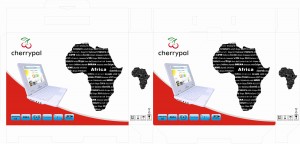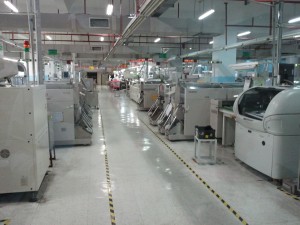If you watch TV regularly, you might have noticed a dramatic change in the type of products advertised in the last few years. Compared to only five years ago, we are getting bombarded with TV advertisement for smartphones and other communication devices. This striking change is a definite indicator that mobile communication is a high growth industry – both on the hardware as well as on the software side.
Whether simple phones, smart phones, tablet computers, high-end industrial equipment or technologies protecting the environment, they all have one important attribute in common, they use electronic components which are all manufactured and assembled in Mainland China. Does this mean that manufacturing jobs in the US are gone for good?
We here at Cherrypal developed a blueprint in early 2010 for creating highly competitve assembly plants for mobile phones, tablet and laptop computers here in the US. In my presentation at the Commonwealth Club on September 16th, 2010, I outlined how small and highly optimized assembly plants in the US would be cost neutral compared to the huge assembly plants of Chinese contract manufacturers in Shenzhen. Foxconn, assembler for Apple, Dell, HP and other consumer electronic brands, employs more than 400,000 workers in Shenzhen, Mainland China, just about half an hour by train from Hong Kong.
We talked to several communities, from Detroit, Michigan to Sacramento and Oakland in California, how to go about creating jobs in neighborhoods with high unemployment. The idea was met with much excitement, however it was not followed by the necessary actions. The generated interest and excitement fell short when we asked for loans or loan guarantees in return for new jobs. As a privately non-Venture-Capital funded company we can only pull off projects of this magnitude through close collaboration with strong partners and the necessary financial backing. After all, that is how China was able to get its manufacturing and assembly industry started: what most people don’t know is that China’s main competitive advantage is not its cheap labor, but rather, government supplied loan guarantees in return for job creation.
Despite the lack of interest in the States we continued to develop the concept, it is now called “Made in Suburbia”. It provides the operating plan and financial models and analysis of how a MISAP (Made in Suburbia Assembly Plant) can be operated profitably and very beneficially to the local community.
Each MISAP has between 100 to 500 workers employed in sustainable, fairly paid and clean jobs in assembly, logistics and administration. Unlike traditional large scale Chinese assembly plants MISAPs will also act as a local support and logistics hubs, handle returns, replacements, repairs. MISAPs also maintain a community center, engage with local schools and provide insight into electrical and mechanical engineering, software development, and customer support. For every MISAP job created, an additional 7 jobs outside of the assembly plant will be created, adding another 700 to 3500 new jobs to the local economy.
MISAPs are a very compact, highly productive and low-overhead finished-goods-creation facilities, making them cost neutral compared to the low-labor cost and loan subsidized facilities in China. Corporate managers of other consumer electronics brands are aware of the benefits of local assembly, however, nobody has the guts to execute on it. Who would possibly want to explain to Wall Street that their company decided to manufacture consumer electronics in Michigan although labor cost in China is just a fraction? It would require a lot of explaining and the stock price would still go down.
Americans love to watch ABC’s “Good Morning America”, the Emmy award-winning morning news program. Another simple way to create jobs would be to produce a TV show called “Good bye America”, hosted by a “Simon Cowell”-like type judge. The show’s premise could be to let America select the most ignorant, “irrelevant”, “forgettable” and incompetent corporate manager or politician. It would be painful, highly entertaining, an American reality show at its best.
Seriously though, China and India are “in” – America has fallen out of fashion as a place to assemble goods – perception becomes reality. Is the perspective on stock valuation by Wall Street and corporate America still good enough?
In the 2008 presidential campaign politicians show-cased “Joe the Plumber”, a hard-working plumber who’s job cannot be outsourced to China. Isn’t it time to talk about “Bill the unemployed assembly plant worker” in 2012? Politicians know how to bail out banks, but when it comes to job creation for ordinary people they are clueless, or at least not very motivated.
We are looking for MISAP partners globally, from the United States to Canada, Mexico, South America, Africa, Eastern Europe, Africa but also Asia. There is no logical reason why consumer electronics should only be assembled in China – other than lack of entrepreneurial imagination and ignorance. Every MISAP is the seed for a micro-Silicon-Valley-like ecosystem. MISAPs are going to be very successful in Africa – welcome “Made in Africa” for consumer electronic devices and applications.

